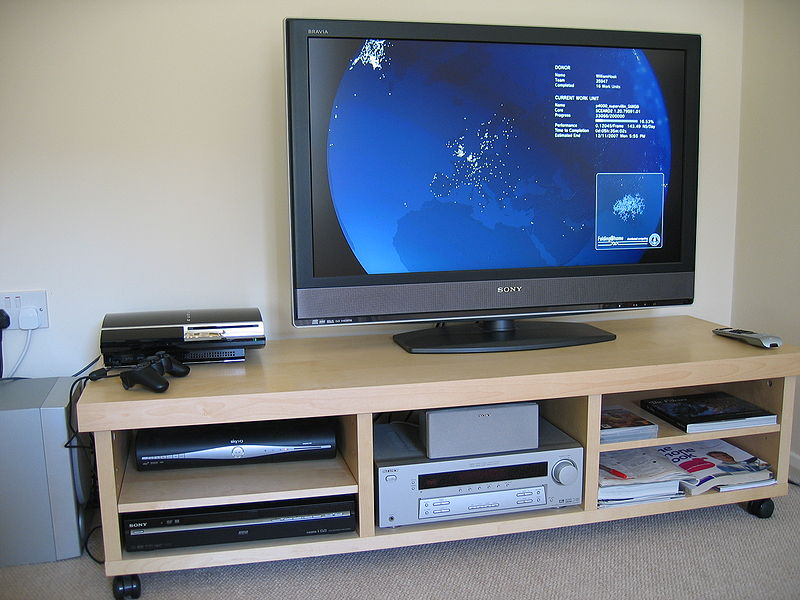

OLED TVs were so superior in just about every way (except perceived motion) that plasma TVs died a quick and rather unceremonious death. They started out really expensive and even though they’ve come down in price, they’re still expensive compared to many LCD-based TVs.
FLAT SCREEN TV TV
And black was black, because the pixels were completely turned off, without any backlight bleeding through.Īnd since then, OLED TVs have been at the forefront of TV tech, routinely winning best TV awards year after year from just about everyone. They were also quite a bit brighter than plasma TVs, if not as bright as LED TVs, and the colors were unlike anything we’d seen on a TV before because the red, green, and blue light they made was more exact, so you could come up with all these new color combinations. OLED TVs were way lighter, and ridiculously thin because they didn’t need phosphors or even glass to contain everything. But instead of using gas, they used organic compounds that would light up as individual pixels when you put electricity to them. OLED stands for organic light-emitting diode, and in many ways, these new sets were l ike plasma TVs. The year was around 2012, and OLED screens were making their way into the mainstream in phone-size devices, as well as TVs. We’ve got LED TVs, we have plasma TVs - and then comes OLED. OLED LG C1 OLED TV Dan Baker/Digital TrendsĪnd now we are more or less at the modern day. This was still an LCD TV with a backlight, but the backlight changed to LED, so we started calling them LED TVs instead of LCD TVs – much to the annoyance of people like me. LEDs also could get a lot brighter than old-school light bulbs, so these so-called LED TVs were all the rage for multiple reasons. We ditched the light bulbs for LEDs, and suddenly the race to make the thinnest possible TV was on. That’s when the LED - the light-emitting diode - came into play. But nobody cared, because look how cool this is! LED Samsung UN46FH6030F LED TVīut then someone figured out that using the same kind of light bulb in our TVs that we used in our lamps was antiquated. Things that were supposed to be black were really just a milky gray. They got brighter than plasma TVs and were just generally so cool that the public didn’t really notice that they couldn’t produce black colors very well - or at all. LCD TVs at first had a compact fluorescent light bulb in the back shining light through all these different layers so that you got a nice image on the screen. LCD TVs also were flat panels, but they were far lighter and easier to move around, making them a piece of cake to mount on the wall. But a lot of work was being done with liquid-crystal displays to make them usable for TV applications. The plasma TV was the flat-panel pioneer. Emissive displays, which don’t need a backlight at all, tend to be thinner. As you can imagine, transmissive displays - ones with some sort of backlight - tend to be thicker. A transmissive display, for the purposes of this discussion, is one which has a backlight - or a light system at the back of the TV that has to shine through a bunch of layers in order to produce lit-up pixels. Emissive displaysĪn emissive display is a screen whose picture comes from each pixel lighting up individually. The flat-screen part of the plasma became kind of a distraction from what was really cool about the technology - it was an emissive display. And even though all TVs today are flat screens, that term has held on. This whole flat-screen TV thing was a big deal. Plasma TVs were about as futuristic as it got at the time. Put electricity to them and the gas turned to plasma and lit up phosphors. Plasma TVs had tiny little pixel pockets of gas in the screen.

Then came the plasma TV, and along with it the term “flat-screen TV.” This is when TVs basically divorced the 4:3 aspect ratio and moved into the 16:9 rectangular screen shape. But we loved them because they were huge and made it feel like being at the movies at home. Also, they weren’t especially bright - the contrast was terrible. And while they provided a very big picture, they were generally a huge headache because you had to keep the three light cannons in perfect alignment - or convergence - or you got a blurry rainbow-looking image. Along with the CRT TV we also got rear-projection TVs, which were simply known as “big-screen TVs.” These huge boxes used three color light cannons to project an image on a screen from behind - hence rear projection.


 0 kommentar(er)
0 kommentar(er)
